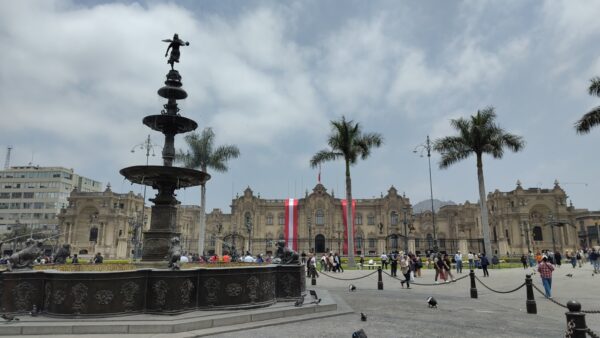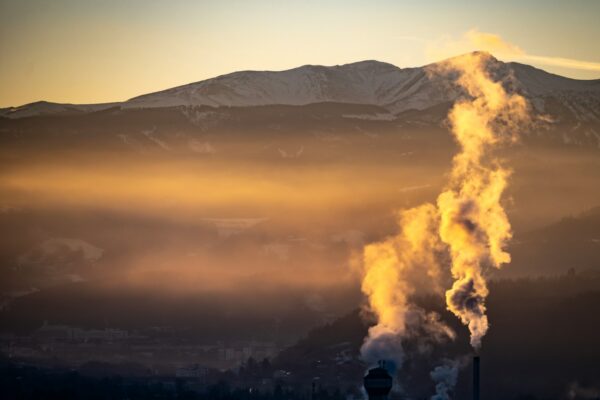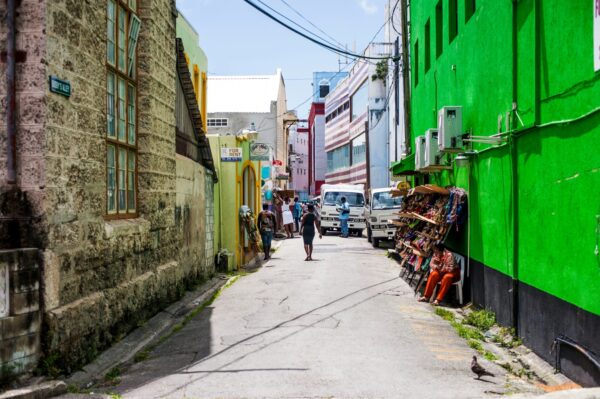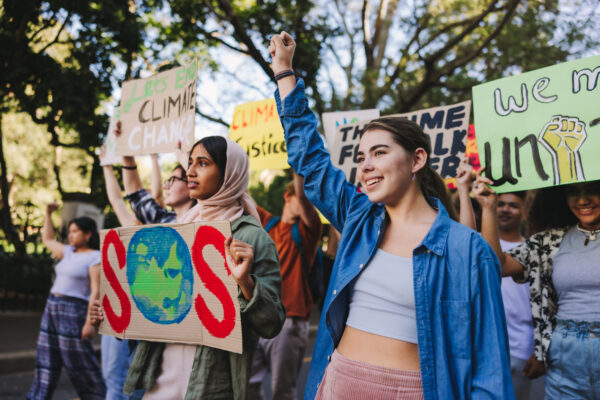
The International Energy Agency's (IEA) latest World Energy Outlook shows that while momentum is building on decarbonisation - with record rollout of renewable energy and a scaling-up of electric vehicles - we are still far from limiting warming to 1.5°C.
But crucially, the window to get there still remains open – just.
Under current policies (STEPS in IEA parlance) the 2024 World Energy Outlook estimates we're still heading to warming of 2.4˚C by 2100 with no improvement since last year. The Climate Action Tracker 2023 estimates are little more pessimistic, with warming headed towards 2.7°C under current policies.
This means governments urgently need to ramp up action to substantially reduce emissions by 2030 and reach net zero CO2 emissions by 2050.
The report shows the world is close to peaking CO2 emissions by 2025, but that after this milestone, emissions would not decline substantially under current policies, unless governments do more to ramp up action.
While the report doesn’t provide specific information on when the world’s largest emitter, China, will peak its emissions, it indicates this would happen around 2025. This may be a little pessimistic, given the changes we are seeing in China: there’s every chance that China's emissions peaked in 2023 - but only time will tell, as we get more data in the coming months.
Renewables roll out is accelerating
The good news is that clean energy is entering the energy system at an unprecedented rate, with more than 560 GW of renewables capacity added in 2023. Even under current policies, renewables will reach 10 000 GW by 2030 – short of what is needed for 1.5ºC, but enough to push power sector emissions into decline.
Global investment in clean energy has increased by 60% since 2015, when the world signed the Paris Agreement. Investment flows to clean energy projects are approaching USD 2 trillion each year, almost double the combined amount spent on new oil, gas and coal supply. Prior to the pandemic, this ratio was closer to 1:1.
While energy demand is rising, clean energy growth means that demand for each fossil fuel: coal, gas and oil, will all peak by 2030. In the IEA’s current policies scenario, coal begins to decline around 2025, while oil and gas demand peak towards the end of the decade.
Despite this the IEA emphasises that decisions by governments, investors and consumers still too often entrench the flaws in today’s energy system, rather than pushing it towards a cleaner and safer path.
Energy supply glut: an opportunity to accelerate the energy transition
The IEA projects an oversupply in oil and LNG in the second half of the 2020s - well above what would be needed even for current policies, which assumes we take no further action on climate and has us heading towards 2.4-2.7°C global warming. This massive overdevelopment has been forecast for several years and exceeds levels consistent with 1.5°C.
This glut in oil and LNG will likely lead to increased competition for market share among suppliers, and in our view, carries the risk of LNG in particular crowding out renewable energy development in different parts of the world, notably in Asia, creating fossil fuel lock in.
In this context it is frustrating to note that fossil fuel subsidies remain at record levels. This oversupply of fossil fuels and the downwards price pressure it will create, provides a real opportunity for governments to phase out fossil fuel subsidies and to invest in clean technologies. Numerous commitments have been made to phase out fossil fuel subsidies but have not been followed through. Recent research reinforces the fact that we need to see time-bound policies adopted by governments, with appropriate international support for low-income countries.
While there may be downward pressure on fuel prices for a while, history tells us that the cycle will inevitably reverse, and prices will rise, pointing to economic, as well as climate, repercussions. The World Energy Outlook clearly outlines that the only way to escape from exposure to volatile fossil fuel markets is to transition to clean energy.
However, the report also warns that markets for traditional fuels and clean technologies are becoming more fragmented: since 2020, almost 200 trade measures affecting clean energy technologies – most of them restrictive – have been introduced around the world, compared with 40 in the preceding five-year period.
No new fossil fuels required under 1.5˚C scenario - including fossil gas
The IEA’s net zero scenario for 2024 reiterates what it has said before: declines in demand are sufficiently steep that no new long lead-time conventional oil and gas projects are required. This should send a strong message to those who continue to argue that, for example, fossil gas is a "transition fuel". It isn't.
This includes no new coal mines or coal mine lifetime extensions. By 2035, 95% of total energy investment needs to be in clean energy.
Climate change is complicating the energy transition
Energy security and climate action are inextricably linked: extreme weather events, intensified by decades of high emissions, are already posing profound energy security risks.
For example: in 2023, around 800 TWh of electricity was used for cooling during extreme heat events, up from less than 300 TWh in the 1990s. This can be seen in countries like India, which is ramping up coal power to meet this demand.
A comprehensive approach to energy security needs to extend beyond traditional fuels to cover the secure transformation of the electricity sector and the resilience of clean energy supply chains.
Financing costs and project risks are limiting the spread of clean energy
There are still 750 million people without access to electricity (mainly in Sub-Saharan Africa) and two billion without clean cooking. The IEA’s net zero scenario is the only pathway out of the three that it models that provides universal access to modern energy by 2030. The other fossil fuel dependent pathways fail to achieve this.
Developing countries need dedicated investment to make the shift to clean energy technologies and this report confirms, yet again, that two-thirds of the global population are essentially missing out on the boom in renewable energy and clean tech investments.
The recent increases in clean energy investment come mostly from advanced economies and China, making up 85% of the total, while other emerging market and developing economies account for just 15%.
Many of these countries are financially constrained, and the sharp increases in needed clean energy investment require more support from international investors and institutions.
The IEA report identifies that high financing costs and project risks are limiting the spread of cost-competitive clean energy technologies in developing countries, where they can deliver the biggest returns in terms of both sustainable development and affordability. For example, financing costs for a typical utility-scale solar PV project are at least twice as high in emerging markets and developing economies as in advanced economies and China.
With international climate finance, and in particular the New Collective Quantitative Goal (NCQG) on finance up for agreement at COP29 in Baku, the IEA’s finding that governments are still responsible for around USD 1 trillion of energy sector investment today through state-owned companies and assets is highly relevant. By 2035, the IEA’s net zero scenario projects investment by governments will need to increase by about 40%, and shift to be fully aligned with the energy transition (much of it currently is still in fossil fuels).
Overall, the IEA report shows that the 1.5°C goal can be kept in reach but only with urgent action to reduce emissions by accelerating the rollout of renewable energy, EVs and clean tech. Crucially, clean technology can also help overcome energy poverty, but will require scaled up investments supported by governments, along with private sector investment at a much larger scale.













